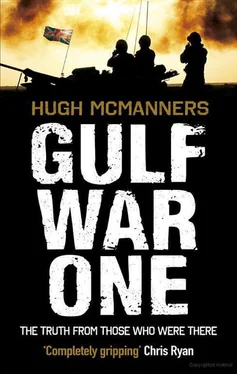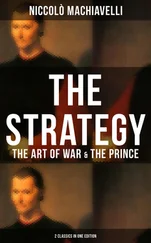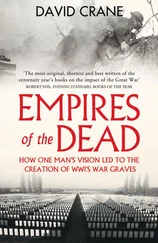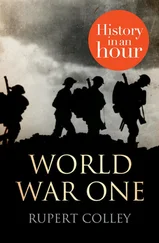I also spoke with all the major British defence contractors. We’d been buying their equipment all this time and so far it hadn’t been much in harm’s way. They were trying to sell it around the world, so people would be looking hard at how it performed for us. They got the message. A lot of those companies’ staff went out with the troops to make sure the equipment performed.
Major David Potts
SO2 Army Logistics, Quartermaster General’s Department
Vickers couldn’t make our Challenger tanks sufficiently reliable in time to be used in the Gulf. This was a disaster, so I suggested we should ship them out to the Gulf while working out what to do, then do all the upgrading work out there.
I worked all that night with a guy called Robin Bacon, tabulating how we might do it on to squared paper. This was the sort of stuff we did a lot of in the MoD – producing theoretical schematics that take no account of any of the endless frictions of real life.
We reckoned to muster the vehicles, spares and people, while chartering the ships; put the vehicles on the ships, sail them out to theatre while all the time developing the upgrades to make them reliable; then fly out the upgrade packs, fit them, and drive the tanks upcountry, which we estimated would take sixty-three days.
In the morning, I took our table to my boss. An awful lot of work had been done on all these problems, but after it all went up the chain, our one chart was pulled out of all the other mass of paperwork; and the next thing was ministers announcing we were sending an armoured brigade out to the Gulf, and they’d be there in sixty-three days! This was a blinding moment of realisation for me; that we were absolutely not at the bloody Staff College any more. This was for real – serious stuff. Every single thing we did led to people taking real decisions based on our work.
Then followed endless discussions with Germany, in which we were told, ‘You don’t understand because you’re a gunner and he’s a cavalry officer. We can’t do it like this. Why didn’t you talk to us about this in more detail? Where did get your availability statistics?’
We told them we’d used tank availability and reliability figures from live firing training in Canada, then added our own fudge factor. I’d respond to their howls of disbelief with, ‘How the hell were we supposed to do something like this? You may not have noticed, but we haven’t actually used this bloody tank in the desert lately.’ ‘Oh well,’ the senior Germany people said, ‘we don’t think this is a very sensible plan.’
On 2 August 1990, Saddam Hussein’s forces had invaded and annexed Kuwait. There was nothing to stop him from continuing westwards, capturing Riyadh and the major Saudi oilfields. But, uncertain of Arab support, he remained at the Saudi border, a line drawn across thousands of square miles of sand through which he could advance at any time. The Saudi military, although seventy-two thousand strong, well equipped with a fine modern air force, had never had to defend its own territory and in the face of a one million-strong army with five thousand tanks and five hundred aircraft. In the face of this serious and unexpected national threat, the repressive nature of the Saudi royal family’s absolute rule made the possibility of internal revolution very real.
The Saudi army would need help to defend its own borders, and the distinct likelihood of internal Saudi opposition taking advantage of the situation made it vital that the international community act swiftly to forestall revolution, invasion, or both. At this point, Saddam Hussein controlled more than twenty per cent of the world’s oil, so the decision to mount an international operation to defend Saudi Arabia was a race against time. The Saudi government appealed for international help.
Saddam moved swiftly to detain thousands of western workers in Iraq, including four thousand five hundred British, as hostages – or ‘guests’, ‘to prevent the scourge of war,’ he said.
The problems of creating an international response to Saddam’s threat were enormous, compounded by many tensions between the West and Arab nations, and among the Arabs themselves. From very early on, it was clear the response would have to be military, to defend Saudi Arabia, although intense diplomatic efforts were to continue right up until the very last moment. Furthermore, a military force capable of countering Saddam’s army would have to be of massive size. For political reasons it would have to include as many personnel from as many Arab countries as possible, and despite all of this, still needed to be capable of mounting a fast-moving modern armoured campaign.
At this stage only defensive operations were envisaged, hence the name ‘Desert Shield’. The major problem envisaged was the logistics of shipping out a tank force large enough to defend against Saddam’s Russian tanks. But commanding such a force was also going to be an enormous problem and, more terrifying, there was the spectre of defending against Saddam’s use of chemical and biological weapons. Disappointingly, support from some European Union countries – notably Belgium – proved lacking.
Dr Mary McLoughlin
Although many people in Iraq knew tensions were mounting over Kuwait, the actual invasion was a very great shock. Despite the various accusations Iraq was making of Kuwait stealing oil and so on, we didn’t think Saddam would actually do anything military so soon after fighting such a long and debilitating war.
And since the end of the Iran war, teams of foreign engineers were working all over Iraq, developing a hydroelectric system and the oil infrastructure. It didn’t seem sensible for the government to jeopardise this work. So the idea of anybody planning any kind of war would never have entered my head in a million years.
The Rt Hon Tom King
UK Secretary of State for Defence
Margaret Thatcher was in the USA at the time, to receive the Aspen Institute Medal of Freedom, with President George Bush on his way to Aspen to present it to her.
She very quickly was fully seized that the invasion was an act of naked aggression, of which there could be no appeasement, meeting members of the American cabinet, and urging the international community to take immediate steps to stop it, and put in place a shield to protect Saudi Arabia, with Britain working closely with the Americans. She also made the remark to President Bush, ‘It’s no time to wobble now, George.’
Major David Potts
SO2 Army Logistics, Quartermaster General’s Department
A lowly major is on the bottom rung of the whole MoD ladder. From this position, it seemed to me that the size of the force the UK would commit, and where and how the operation would be commanded, would present very big problems. But I could also see that affordability and logistics would determine the size of the force we were going to send.
The Rt Hon Tom King
UK Secretary of State for Defence
One of the Saudi king’s titles is ‘Custodian of the Two Holy Mosques’. Inviting in foreign forces was a difficult decision. We needed an invitation, so Dick Cheney, the US Secretary for Defense, went immediately to Saudi Arabia. But the danger was clear, and after a time the invitation was issued, and we went forward.
Martin Bell
BBC Television
Immediately after Saddam invaded Kuwait in August, Tom King went out to Saudi Arabia with a small press pool to schmooze the Saudis. There was a lot of very rapid negotiation of Status of Forces Agreements and so on, to be signed before troops could be sent out. It being the very early days of satellite broadcasting, we flew out to Saudi Arabia with an engineer who had a huge amount of electronic clobber, which was all rather unsatisfactory.
Читать дальше












